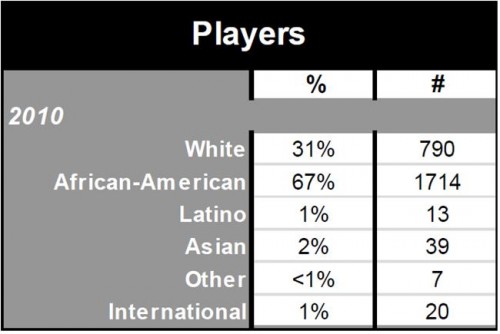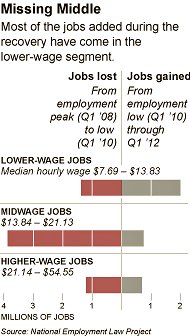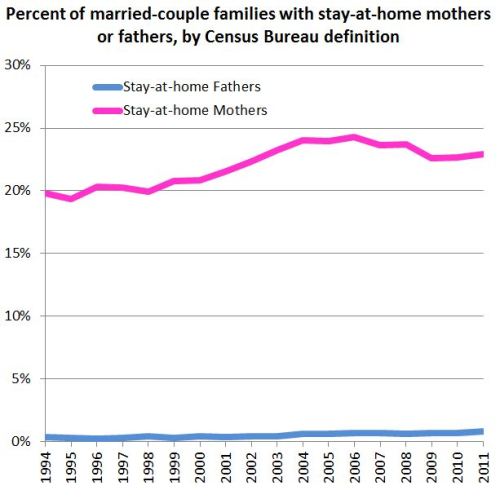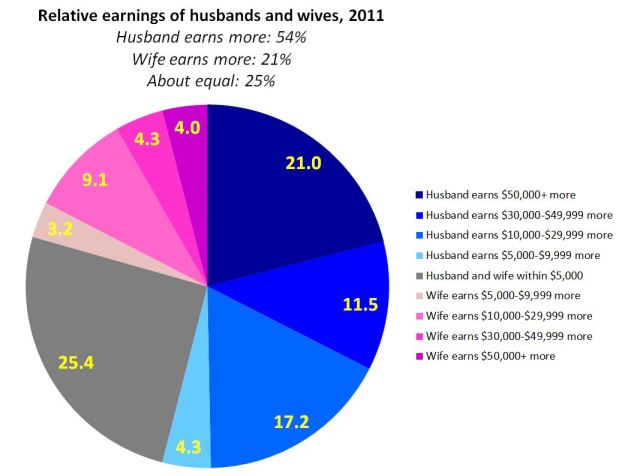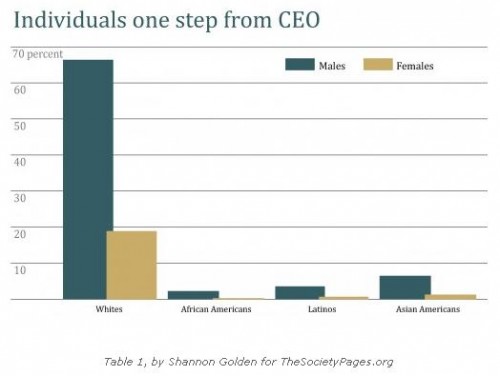Cross-posted at Racialicious.
Race as biology has largely been discredited, yet beliefs about one race being biologically superior to another still seem to pervade one social arena: sports. Claims that different races have genetic advantages to play particular sports persists both because individual athletic ability obviously has some basis in biology (even though that does not mean it is racial biology at play) and athletics appears to be one social arena where racial minorities succeed over whites in certain sports.
For example, according to the Institute for Diversity and Ethics in Sports’ 2011 Racial and Gender Report Card on The National Football League (http://www.tidesport.org), over 2/3rds of players in the NFL are African American — far higher than the proportion of Blacks in the general population of the United States. This report also shows that all other racial groups are under-represented in the NFL relative to their proportion in the general population, including Asians who make up only 2% of the players in the league.
These statistics compel many to assume that racial biology plays a large part in athletic success. However, the 60 Minutes investigation Football Island debunks this assumption during a trip to the place where most of the Asian players in the NFL come from: American Samoa. This small island is a U.S. Territory in the Pacific and has a population small enough to seat comfortably in most professional football stadiums. Yet the average Samoan child “is 56 times more likely to get into the NFL than any other kid in America.”
60 Minutes finds Samoans succeed at football only in small part because of their size and strength. Rather, their success grows mostly out of a “warrior culture” that instills a strong work ethic in young men. Also, on the island the daily chores that are a necessary part of survival provide a lifetime of athletic conditioning. In short, many of the Asian players in the NFL are successful because of their nurturing, and not their nature.
[vimeo]https://vimeo.com/60688464[/vimeo]
Samoans are also driven to succeed at football because they come from a place plagued by poverty and often their only chance at a better life is through athletics (that, or follow another Samoan tradition and join the Armed Forces). In the video, the most famous Samoan player, Troy Palamalu of the Pittsburgh Steelers, explains “football is a ‘meal ticket.’ Just like any marginalized ethnic group, you know, if you don’t make it to the NFL, what do you have to go back to?”
—————————-
Jason Eastman is an Assistant Professor of Sociology at Coastal Carolina University who researches how culture and identity influence social inequalities.
Lisa Wade, PhD is an Associate Professor at Tulane University. She is the author of American Hookup, a book about college sexual culture; a textbook about gender; and a forthcoming introductory text: Terrible Magnificent Sociology. You can follow her on Twitter and Instagram.

